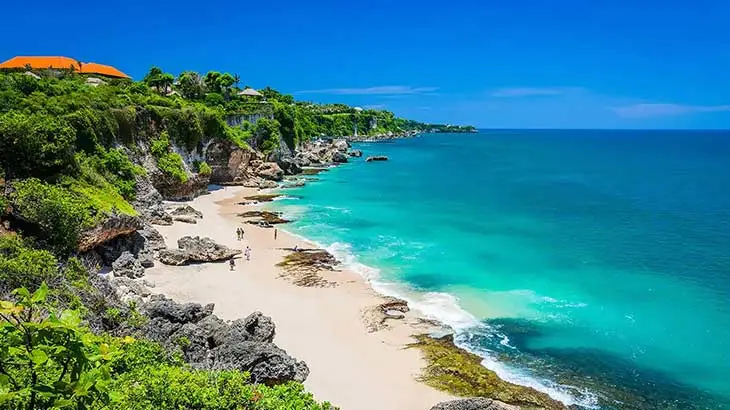Rising temperatures, erratic weather patterns, and environmental degradation are taking a toll on the island’s delicate ecosystems. For a destination so dependent on its natural resources and biodiversity, the impacts of climate change are not just environmental but also deeply economic and cultural.
As climate change reshapes Bali’s landscape, its communities and industries are being forced to adapt. From coastal erosion to water scarcity, the challenges are significant, but they also present an opportunity for innovative solutions and sustainable practices. Understanding these effects is crucial for protecting Bali’s future and preserving its unique identity as an Island of the Gods.
The Impact of Climate Change on Bali’s Natural Ecosystems
Here are five key effects of climate change on Bali’s natural habitat.
1. Rising Sea Levels and Coastal Erosion
One of the most visible impacts of climate change in Bali is rising sea levels, which lead to coastal erosion. Iconic beaches like Kuta and Seminyak are experiencing loss of shoreline, threatening tourism and local livelihoods. Sea-level rise also increases the risk of saltwater intrusion, affecting agricultural land near the coasts.
Visitors on a Bali tour may notice these changes during their travels, highlighting the urgency of addressing climate change to preserve the island’s famous beaches.
2. Coral Reef Bleaching
Bali’s vibrant coral reefs, which attract divers from around the world, are under threat from rising sea temperatures. Warmer waters cause coral bleaching, where corals lose their color and become more vulnerable to disease. This not only impacts marine biodiversity but also affects the livelihoods of communities dependent on fishing and tourism.
Sustainable initiatives and eco-tours are being promoted to educate visitors about protecting Bali’s marine ecosystems and the importance of reducing environmental footprints.
3. Increased Risk of Flooding
Erratic rainfall patterns caused by climate change have led to an increased risk of flooding in Bali, especially in low-lying areas. Heavy rains, combined with poor drainage systems, result in flash floods that damage infrastructure and displace communities.
Adventurous activities like ATV Bali may be disrupted during the rainy season due to unpredictable weather, showcasing the broader impacts of climate variability on tourism and local economies.
4. Deforestation and Loss of Biodiversity
Climate change, coupled with deforestation, is leading to habitat loss for many of Bali’s unique species. Forested areas, crucial for maintaining ecological balance, are shrinking due to agricultural expansion and illegal logging. This has a cascading effect on wildlife populations and the island’s biodiversity.
Efforts to reforest areas and create conservation zones are essential to mitigate these effects and ensure the survival of Bali’s diverse flora and fauna.
5. Water Scarcity
Bali is facing growing water scarcity due to changing rainfall patterns and increased demand from tourism and agriculture. Rivers and lakes are drying up, and groundwater levels are depleting at an alarming rate, impacting both rural and urban areas.
Visitors are encouraged to adopt sustainable practices during their stays, such as conserving water and supporting eco-friendly accommodations, to help reduce the strain on Bali’s water resources.
Climate change poses significant challenges to Bali’s natural habitat, but with collective efforts from locals, tourists, and policymakers, the island can take steps toward resilience. Protecting Bali’s environment ensures the preservation of its beauty for future generations.









